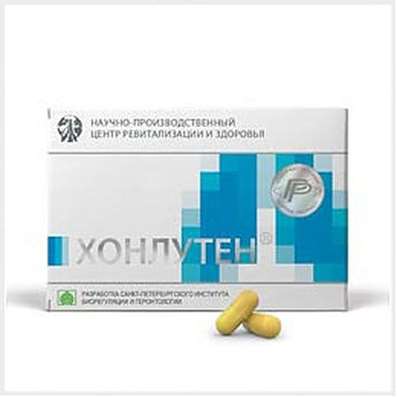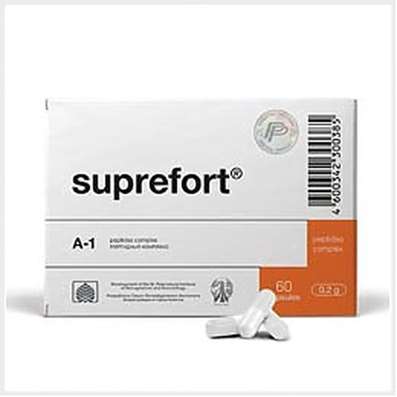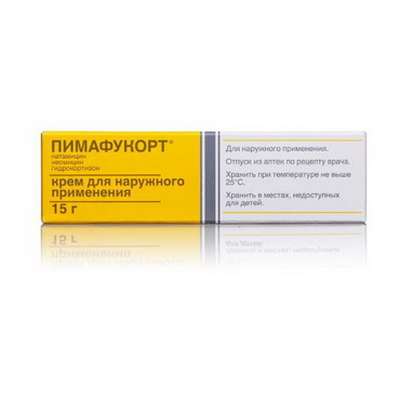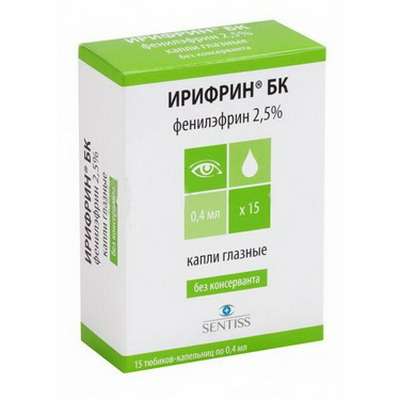Global Turnover of Sports Doping is Comparable to Drug Trafficking Market
01 Aug 2016
Who Invest billions in Unfair Play
Eve XXXI Summer Olympic Games, which starts on August 5, Rio de Janeiro, was marked by a grand doping scandal around the Russian athletes. Doping - absolute evil and a huge sports world problem. Its use skews the results of sports and brings harm to the health of athletes. This dope is a global market, which is estimated at $ 50 billion annually. Let’s study the economic aspects of production, distribution and use of doping.
All for Victory
The modern elite sport it is a lot of money. For these unscrupulous athletes and coaches often go to doping - natural, synthetic, and drugs which are able to improve the performance of an athlete and optimize results. Every year doping caught up to 2% of the athletes who have passed the test.
The main types of doping: stimulants, peptide hormones (growth hormones), anabolic steroids, diuretics (diuretics), analgesics (pain relievers). Their use depends on the tasks related to sports. For example, in cyclic kinds of (running, cycling, skiing) endurance is important - so used doping type erythropoietin, which improves the delivery of oxygen to the muscles. It is in the use of erythropoietin in 2012 was convicted and disqualified for life the legendary American cyclist Lance Armstrong. Anabolic steroids are used to build muscle, and diuretics - to weight loss, as well as for the withdrawal from the body of other proscribed items.
In the list of prohibited substances World Anti-Doping Agency (WADA) today there are more than 200 items. Some means athletes taking banned only during competition, but are allowed in the training period.
If the body athlete doping test detects prohibited substances, the perpetrator is disqualified. For the first time disqualification lasts for 2 years, and at repeated violation for 4 years or for good.
Actually most of the substances of doping, are medical, drugs. But going into the plane of the sport, they fall under the ban - officially after a fairly long-term monitoring by the WADA, when it turns out that the drug has on the body is an action that can give an athlete an advantage in the competition.
A striking recent example is the ill-fated Meldonium (Mildronate). The drug, which supports the energy metabolism of the heart, was synthesized in Latvia at the end of the 1970s, in 1984 - is approved for use, in 2012, included in the list of vital and essential medicines. And from January 1, 2016 WADA prohibited as doping. The most famous victim of Meldonium was the Russian tennis player Maria Sharapova. Recognition of Mildronate injection used, in addition to a two-year suspension, cost her $ 140 million - after a break of advertising contracts with major brands. But sales in the pharmacies Meldonium after the scandal grew 20 times.
Doping is a scourge of world sports. The stakes are high, and the ability of the human body are not limitless. And in the fight for a result there are constant attempts to artificial stimulation. Pharmacological Science is the search for more and more new products, trying to play with WADA to advance: the drug is unknown, it can not be denied. Also being developed methods for early elimination of doping from the body before the competition - not to fall for the tests. Correspondence competition of producers and consumers of doping with the anti-doping services comes with no less persistence than the athletes race in the arena.
Background of doping usage
Doping is essentially the same age as sports. It is known that during the time of the ancient Olympics participants racing chariots fed their horses with herbs that have aphrodisiac properties.
The modern history of confirmed cases of the use of doping agents is carried out since 1865, when the British master race walking admitted using opiates. At the Olympic Games 1904 in St. Louis barely saved winner-marathon runner Thomas Hicks, who "refueled" with a mixture of brandy and strychnine and caffeine.
The first official ban on the use of artificial stimulants in sport adopted in 1928 by the International Federation of Athletics. In the "pre-steroid" era dishonest athletes mainly use widely available while cocaine and strychnine. In 1935 it was invented synthetic testosterone by which Nazi Germany brilliantly performed at the home Olympics 1936 in Berlin. During the Second World War in the sport came from the army, development of doctors to improve the endurance of soldiers – stimulants of nervous system - amphetamines.
In 1958 American physician John Ziegler synthesized the first anabolic steroid - Dianabol, which began to apply weightlifters and bodybuilders. In 1960, the first death associated with the doping was detected: Danish cyclist Knut Jensen fell to the 100-kilometer race in Rome, in his blood found traces of amphetamine. And in 1967, it held the most resonant death from doping: British cyclist Tommy Simpson died during the 13th stage of the race "Tour de France". Cause of death: amphetamines and brandy.
After Simpson's death in 1967 when the International Olympic Committee (IOC) Commission on the fight against doping was set up, headed by the Belgian Prince Alexandre de Merode. At first, this commission had neither the means nor the equipment nor the disciplinary rules and dealt with only the monitoring of cases of doping. Reasons were many: American, Soviet and German (GDR) specialists developed new race promoters. Getting Started Commission was marked by a remarkable story: Americans gave her equipment, which could be determined in blood samples and urine doping popular then - Metandrostenol. Goodwill experts from the United States due to the fact that they have developed for their new athletes anabolic - Stanozolol, and their main competitors practicing on Metandrostenole.
At the Olympic Games 1968 in Mexico were first introduced test for doping, and there was a first suspension (the Swedish national team in pentathlon lost bronze medals). In 1972 he began extensive testing Olympic athletes for drugs and stimulants. In 1975, the IOC banned anabolic steroids.
At the 1988 Olympics in Seoul, there was the loudest doping scandal at the time: the Canadian sprinter Ben Johnson was stripped of his gold medal in the women's 10 meters for the use of Stanozolol.
In total, since 1968, Olympic medals because of doping were deprived of 63 sportsmen. Among them there are also Ukrainians: Athens-2004 Yuriy Bilonog (shot put, gold) and women's quadruple rowing; Beijing 2008 - Lyudmila Blonska (athletics heptathlon silver).
Because of the system of doping scandals and the subsequent concept of "Bulgarian weightlifters" and "athletes of the GDR" in due time became common. But on the eve of the games in Rio in 2016 all the previous scandals blocked its scale exposure of massive fraud doping tests Russian athletes at the 2014 Winter Olympics in Sochi. And the main crime was involved in the scam of state structures of the Russian Federation - Ministry of Sports and the FSB (KGB).
Caught – thief
In 1999, the Agency was established by WADA, which was the main international body for anti-doping system. According to the former chairman of the WADA Athletes Committee Vyacheslav Fetisov, the reason for the creation of the agency was that the IOC, as a public organization, was no longer able to fight against doping previous methods. It required the support of state bodies, including - Interpol and other police agencies. Because it is necessary to deal with organized crime, drug trafficking similar.
Today, WADA has about 600 different organizations, including international and national sports federations, as well as government agencies in different countries. Since 2002, WADA's headquarters in Montreal (Canada), President of WADA since 2014 is a Briton Craig Reedy.
In 2004, during the Olympic Games in Athens was adopted by the current World Anti-Doping Code. On this basis, in October 2005, the International Convention against Doping in Sport adopted by the UNESCO General Assembly in Paris, which was signed by representatives of 191 countries of the world.
WADA representatives carry out system testing athletes for doping - like during the competition, as well as in any other period of time. Evading sample entails the most severe consequences - disqualification and fines. The list of prohibited substances is constantly monitored and updated. There are various exceptions and procedures for the use of drugs by athletes in case of medical necessity (eg, asthmatics). In general, all the activities of WADA carefully regulated and painted to the finest detail.
WADA budget, which now stands at about $ 60 million a year, half forms the IOC, and the half - the governments of the participating countries. In particular, the major contributions of the founding countries of the WADA is $ 750 thousand by the IOC and the WADA structure -. The fund anti-doping research (Anti-Doping Research Fund) are also funding the IOC ($ 10 million) and the Government of the member countries ($ 6 million).
IOC President Thomas Bach declared the fight against doping a top priority in their work. Although the IOC accepted a compromise solution on the admission to the Olympics in Rio Russian athletes - at the discretion of the relevant international federations, WADA has extended the mandate of the Independent Commission on the work of Richard McLaren, which investigated the manipulation of doping tests at the Games in Sochi in 2014. The work will be continued as soon as the Commission would find the necessary means to ensure that their activities - $ 1.3 million.
Price issue
If the figures of funding WADA are open and fair, this is impossible to say when it comes to speed doping. Doping - it is an absolute crime, the phenomenon of the same order of magnitude as the drug trade and corruption, with the same degree conspiracy when all amounts are estimates. And, of course, no audit firms conducting an assessment of the global sports market, do not include in it the topic of doping.
The approximate volume of the global retail market of doping, according to the Italian expert Alessandro Donati, is in the neighborhood of $ 50 billion.
For comparison, the retail market of cocaine, according to the UN Office on Drugs and Crime, is $ 85 billion, and the opiate market -. $ 68 billion That is, the order of numbers is quite comparable.
Due to the large amounts of money and the illegal nature of the production, delivery and distribution, global criminal networks engaged in doping business. A significant part of the raw material (chemical powders), necessary for the production of illicit drugs coming from Asia. The main market is divided between China, India and Thailand - countries where a well-developed pharmaceutical industry in the presence of cheap labor.
According to WADA experts, the raw material for doping are generally not made in industrial and laboratory scale - on the small private factories. Profit of production ten times higher than the cost of the production. The average profit rate of producers of raw materials for doping is estimated at 900%.
Production and packaging of drugs is carried out directly in clandestine laboratories in various countries. production and distribution principle is almost the same as that of drug dealers. However, doping, as opposed to hard drugs can be legally purchased in the online stores - in the case of athletes, amateurs, who do not participate in the competition, and train for themselves, and, accordingly, are not subject to the attention of the WADA. The annual income of an online store, selling doping products may reach $ 40 million. In addition, often distribution points doping advocate fitness centers. That fans, primarily - bodybuilders, constitute the bulk of consumers of doping.
The segment of the market of professional athletes doping Alessandro Donati estimates at $ 15 billion. It is the active role played in the spread of the so-called "black doctors." They represent a kind of market premium segment - a small number of distributors and high prices for wealthy clients. The most famous of these characters have become Victor Conte ("It's the BALCO") and Eufemiano Fuentes ("Operation Puerto").
Victor Conte - founder and owner of the infamous laboratory Bay Area Laboratory Cooperative (BALCO), which on paper was selling food additives, and in fact provided illicit drugs known athletes. sprinter Marion Jones was among the customers Conte, devoid of the Olympic Games in 2000 Sidney three gold and two bronze medals. According to the results of the investigation Conte was sentenced to four months in prison (2007). Today it helps to WADA to detect cases of illicit drugs.
Spanish doctor Eufemiano Fuentes scandal became famous after the "Operation Puerto" - Spanish police investigation against doping in cycling system. In 2006, the laboratory Fuentes police found thousands of doses of anabolic steroids, blood bags with drugs - for subsequent transfusions and apparatus for synthesizing them and transfusion. Fuentes's clients were many of the leading riders in the world. In particular, the Italian cyclist Ivan Basso later admitted that in 2005 paid for doping doctor Fuentes 94 thousand EUR.
The average annual income of the "black doctor" with one experienced athlete Alessandro Donati estimated at $ 30 thousand.

 Cart
Cart





